Having to learn all day at school and then coming back home to do homework can be quite tiresome and frustrating for kids. Kids have to continuously churn and work their brains to retrieve information and make efforts to learn new things every day. Brain breaks for kids are designed to relax them and make it easy to learn new things everyday.
Math & ELA | PreK To Grade 5
Kids see fun.
You see real learning outcomes.
Watch your kids fall in love with math & reading through our scientifically designed curriculum.
Parents, try for free Teachers, use for free
If you give them enough brain breaks, you will see that they are able to learn better and retrieve more information. Brain breaks are known to give kids’ bodies a boost by increasing blood flow. This in turn increases the blood flow in their brains enabling them to retrieve more information more easily. If you’re looking for brain breaks for kids that you can use to help your kids learn better, we’re here with the perfect list for you.
Here are more educational resources to help kids learn better!
10 Best Physical Brain Breaks for Kids
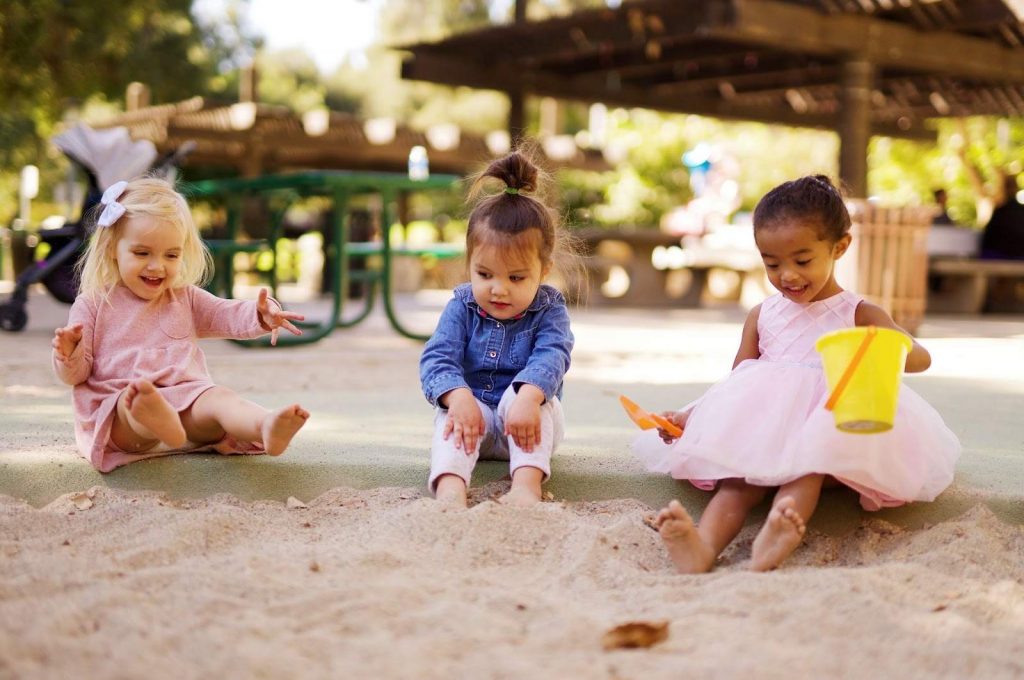
Physical movement can really help kids release tension and loosen up a little bit. Here are some of the best physical brain breaks you can give your kids.
1. Dance Party
What You’ll Need: Speakers and some space
How To Do: All you need to do for this physical brain break is to identify the best dance songs for kids and blare the song on the speakers! Ask the kids to get up and have a dance party for the next five minutes.
2. Exercise Ball
What You’ll Need: An exercise ball and some space
How To Do: Just hand over an exercise ball to the kids to sit and bounce on. Give them some time to bounce on it and release some energy so that they get a good stretch.
3. Cardio
What You’ll Need: An open area
How To Do: Doing light cardio exercises can really help the blood pumping and enable kids to feel fresh and ready to learn more. Ask the kids to spread out and instruct them to do some jumping jacks, light in-place jogging and jumping.
4. Secret Handshakes
What You’ll Need: Nothing!
How To Do: Assign each kid a partner in class and ask them to create a handshake of their own. Every time you want the kids to take a break, ask them to do the secret handshake with their partner and recoup in a while.
5. Action Songs
What You’ll Need: A TV or projector
How To Do: Play some action song videos that give clear instructions to kids on which step to do at which time. These dance breaks are a creative way for kids to release the extra energy they have.
6. Trick the Brain
What You’ll Need: Nothing!
How To Do: Engage the kids in some action-based tricks for their brain. For example, ask them to snap a hand and blink the opposite eye at the same time. These kinds of activities will not only provide with he kids a much-needed break but also help them improve their coordination skills.
7. Simon Says
What You’ll Need: Just a few Simon Says statements
How To Do: This classic game is a great way to give the kids a brain break in the middle of the day. To play this game, you have to say a statement out loud after saying “Simon Says” and the kids have to do what the statement says. For example, if you say “Simon says, clap twice”, the kids have to clap twice. But if you do not say “Simon says” before a sentence, the kids do not have to do what the following statement says. The game tests the kids’ presence of mind and gives them a much-needed refreshing break.
8. Activity Cards
What You’ll Need: Activity cards
How To Do: Pulling out activity cards whenever you need the kids to take a brain break is a great way to surprise them and keep them engaged. Activity cards may contain random fun activities for kids like doing a funny dance, playing hide and seek, etc.
9. Act It Out
What You’ll Need: Random prompts on chits
How To Do: Make the kids pick a random chit from a bowl that has random prompts. These prompts can be something like “drive a car”, “be the traffic police”, “cook breakfast”, etc. The kids have to act out whatever it says on the chit.
10. Animal Actions
What You’ll Need: Animal cards or chits
How To Do: This is easily one of the best brain breaks for kindergarteners. Write the names of animals on different chits and make the kids pick one by one. Each kid has to act like the animal they got on their chits or cards.
Related Reading: Brain Games for Kids to Nurture Holistic Development
10 Best Relaxing Brain Breaks for Kids
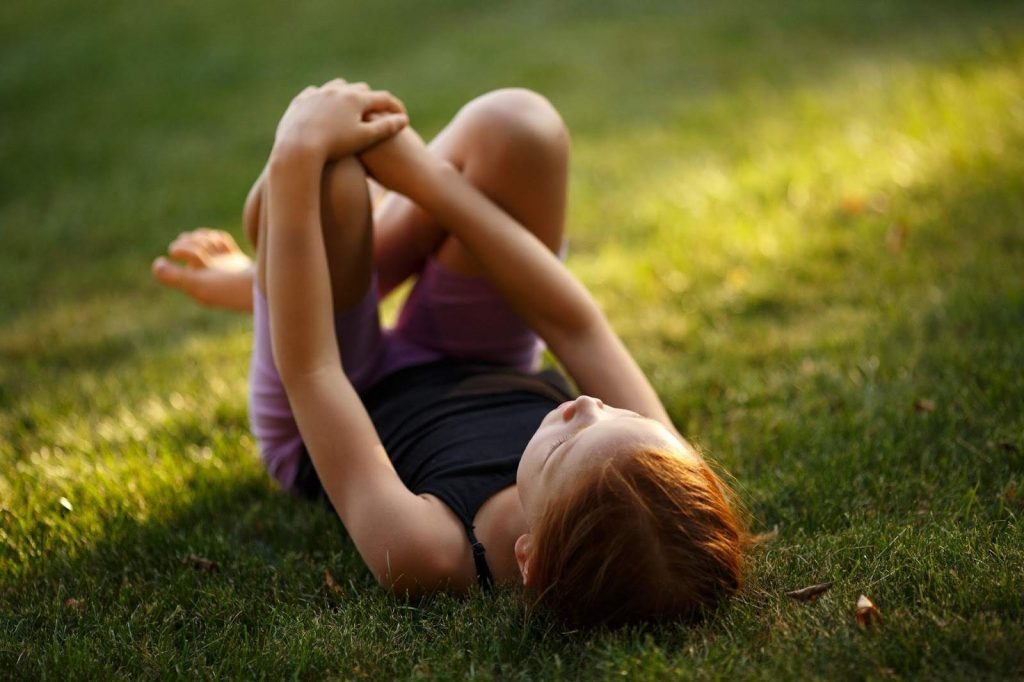
Relaxing brain breaks are important for kids when they feel overworked or stressed. These activities can help kids to feel reenergized and ready to learn more.
1. Meditation
What You’ll Need: A quiet place
How To Do: It is never too early to make kids learn how to meditate. This does not have to be a typical meditation session. All you need to do is guide the kids to breathe deeply and clear their heads. Meditation videos for kids can also help in seamless execution.
2. Yoga
What You’ll Need: Yoga mats
How To Do: Light yoga exercises and poses can really help kids release any tension they’re holding in their bodies. Yoga can also help them destress and empty their minds. Try guiding them into doing some simple yoga poses like the mountain pose or pranayama.
3. Coloring
What You’ll Need: A coloring book, paint or colors of choice
How To Do: Coloring is known to be one of the most calming exercises. It also makes for a creative art activity for kids that is fun along with relaxing. Hand them their coloring books and give them a while to just sit and color whatever they like in it, however, they like.
4. Puzzle Games
What You’ll Need: Small puzzle game kits
How To Do: Doing puzzles is known to be one of the most relaxing and mindful exercises. Doing easy puzzles can be a great brain break for kids. Keep an easy puzzle kit with yourself- one that is designed for younger kids and hand them over when you think they are in need of a break.
5. Calming Music
What You’ll Need: Speakers, a quiet place
How To Do: Calming music is not only for adults, it also has stress-relieving effects on kids. Try finding calming music like white noise, rain noise, spa music, etc and ask the kids to close their eyes for a few minutes while they quietly sit and listen to it.
6. Deep Breathing
What You’ll Need: A quiet place
How To Do: You can learn about various breathing techniques and guide the kids to practice this along with you in a quiet place. Breathing exercises can really reduce stress levels and help kids focus on the task at hand more sharply.
7. Progressive Muscle Relaxation
What You’ll Need: A quiet place
How To Do: This is a guided practice that can physically reduce stress levels immensely. Guide the kids to tense and relax their muscles one by one. This exercise will enable them to be more mindful of their body and mind.
8. Nature Walks
What You’ll Need: An open garden or park
How To Do: Take the kids out for a relaxing walk in a garden. Fresh air is always great and works as a de-stressor for all.
9. Positive Affirmations
What You’ll Need: A quiet place
How To Do: Practice positive affirmations for kids like “I am relaxed”, and “I am calm”, etc while doing deep breathing exercises. This can really help them shift their mindsets and feel at ease.
10. Mindful Exercises
What You’ll Need: A quiet place
How To Do: Learn a few mindfulness strategies and guide the kids to do that as they sit silently. One really effective technique that can help the kids be more mindful is the 54321. The technique involves listing 5 things you can see, 4 things you can feel, 3 things can hear, 2 things you can smell and 1 thing you can taste.
Related Reading: Best Concentration Games for Kids to Develop Super Focus & Attention Skills
10 Best Sensory Brain Breaks for Kids
Engaging senses in various things can really help to relax the mind and the body of kids. Here are some effective sensory brain breaks you can give your kids.
1. Playdough
What You’ll Need: Playdough
How To Do: If you’re looking for simple brain breaks for kindergarten, this is a great option for you. Just hand over some playdough to the kids and give them the time to make something out of it or just squish them. This will help them loosen up.
2. Sensory Bin
What You’ll Need: Toys, dough, balls and anything else you can fit in a bin
How To Do: Mix up the beads, educational toys, etc that you’ve gathered in a bin and hand these over to the kids. This one is specifically popular for younger kids. They can spend hours exploring the different textures and colors in the bin.
3. Scavenger Hunt
What You’ll Need: Some objects to hide and a list of them
How To Do: Hide a few things around the house or the classroom and create simple clues for the kids to read and find the objects. You can either divide this sensory activity across the day and ask them to find one object each time they need a brain break or just all at once.
4. Squishy Balls
What You’ll Need: Stress ball or fidget toy
How To Do: Hand over squishy balls or fidget toys to all the kids and just ask them to play around for a little while. This activity will really help them unwind after a long learning session.
5. Water Play
What You’ll Need: A tub, spoons, bowls, cups, etc and water
How To Do: Fill a tub with water and handover the kids some utensils like spoons, cups, and bowls to fill, empty and refill water in.
6. Kinetic Sand Play
What You’ll Need: Kinetic sand
How To Do: Kinetic sand can be molded and shaped in any way and it doesn’t dry out. Hand over some kinetic sand to each kid and watch them play and build fascinating things with it.
7. Bubble Wrap Popping
What You’ll Need: Bubble wrap
How To Do: This is a tactile and auditory sensory activity that will help to relax the kids. Give them some bubble wrap to pop and watch them have fun with it!
8. Sensory Walks
What You’ll Need: An open and safe area to walk
How To Do: Take the kids out on a walk and encourage them to engage all their senses by looking for different colors, listening for sounds, and feeling different textures under their feet.
9. Aromatherapy
What You’ll Need: Incense sticks, natural oils, etc
How To Do: Engage your kids in this activity by lighting various natural candles, incense sticks, natural oils, etc. Build an aromatic and relaxing environment for the kids to sit and engage their smell sense. Make sure you’re using only natural scents for this activity.
10. Sensory Bottles
What You’ll Need: Small bottles filled with tiny, colorful toys, beads, glitter, etc.
How To Do: Fill a bottle with small toys, beads, glitter and other colorful and fascinating stuff and hand it over to the kids. This will be a visual experience for them and they will be engaged and relaxed by the end of the activity.
Related Reading: Best Auditory Learning Techniques to Help Teachers
10 Best Skill-Building Brain Breaks for Kids
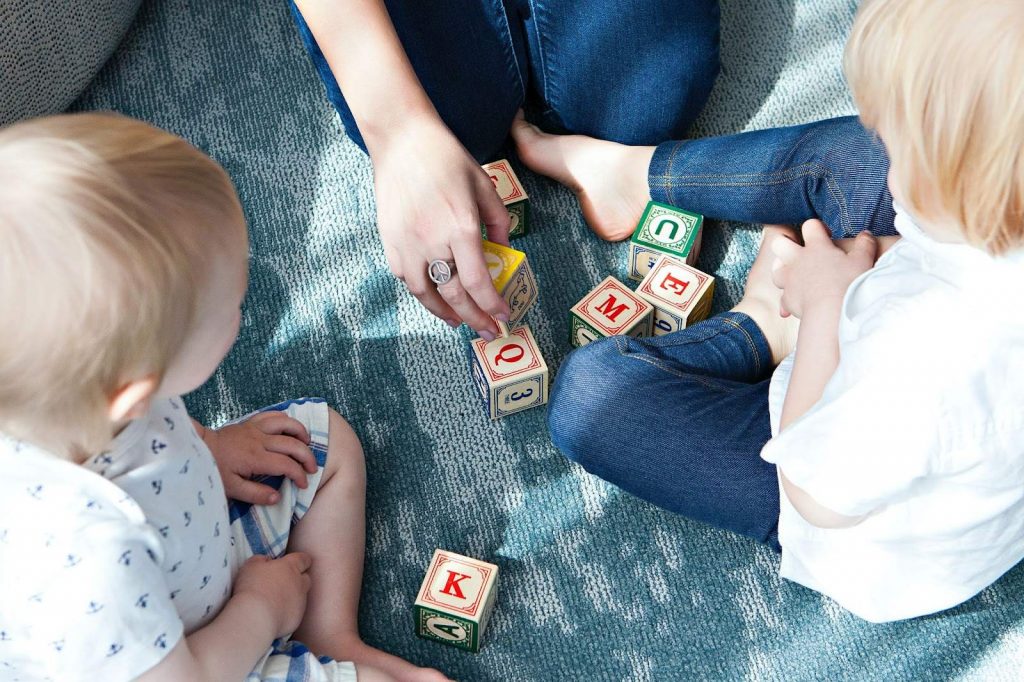
Brain breaks for kids are great for relaxation and but what if they are also able to build some skills? If you’re looking for some skill-building brain breaks for kids, read on.
1. Segment Sounds
What You’ll Need: Chits with random words
How To Do: Ask the kids to pick up a random chit and the word written on it has to be broken down in segments. They will be allowed to clap or stomp as they break down the words.
2. Write a Story
What You’ll Need: A writing prompt
How To Do: Start with a prompt and ask the next kid to create a story around it. Stop and ask the next kid to continue the story. This will keep the kids sharp and build their imaginative skills.
3. Riddles
What You’ll Need: Some fun riddles
How To Do: Ask the kids fun riddles and ask them to guess the answer. Riddles are a fun way to take brain breaks and also help to develop problem-solving skills in kids.
4. Activity Pages
What You’ll Need: Some activity pages and a pen
How To Do: Hand over the activity pages to the kids and ask them to do it in their brain breaks. This can be fun with awesome activities or worksheets like coloring, riddles, etc.
5. Juggling
What You’ll Need: Juggle balls
How To Do: Juggling can be difficult but can be great in building hand-eye coordination among kids. Try to teach the kids basic juggling in their brain bread and watch them have some fun!
6. Brain Teasers
What You’ll Need: Brain teasers
How To Do: Brain teasers can be fun captivity during brain breaks. They can also help to build creative and analytic skills in kids. Give a few brain teasers to kids and watch them solve the mystery!
7. Counting Games
What You’ll Need: Nothing
How To Do: Counting games can help to develop mathematical skills in kids. Ask them to count in 2s, 5s, or backward.
8. Dancing
What You’ll Need: An open area
How To Do: Dancing is a great way to improve coordination, balance, and physical fitness. It also helps to boost mood and reduce stress. Give them some simple steps or just ask them to wing it!
9. Art Projects
What You’ll Need: DIY kits, paper, craft paper, scissors, glue, etc
How To Do: This is one of the most fun classroom brain breaks. Art projects, such as drawing, painting, or sculpting, can help improve fine motor skills and hand-eye coordination. Hand them the DIY material and ask them to build some crafty projects from it.
10. Charades
What You’ll Need: Nothing!
How To Do: Charades can help kids build their communication and acting skills. Divide them into teams and ask one team to give one member of the other team a name of a movie or a word of a decided theme. The player has to act it out and their team has to guess the name or word.
Related Reading: Best Educational Video Games for Kids to Promote Learning
10 Best Brain Break Games for Kids
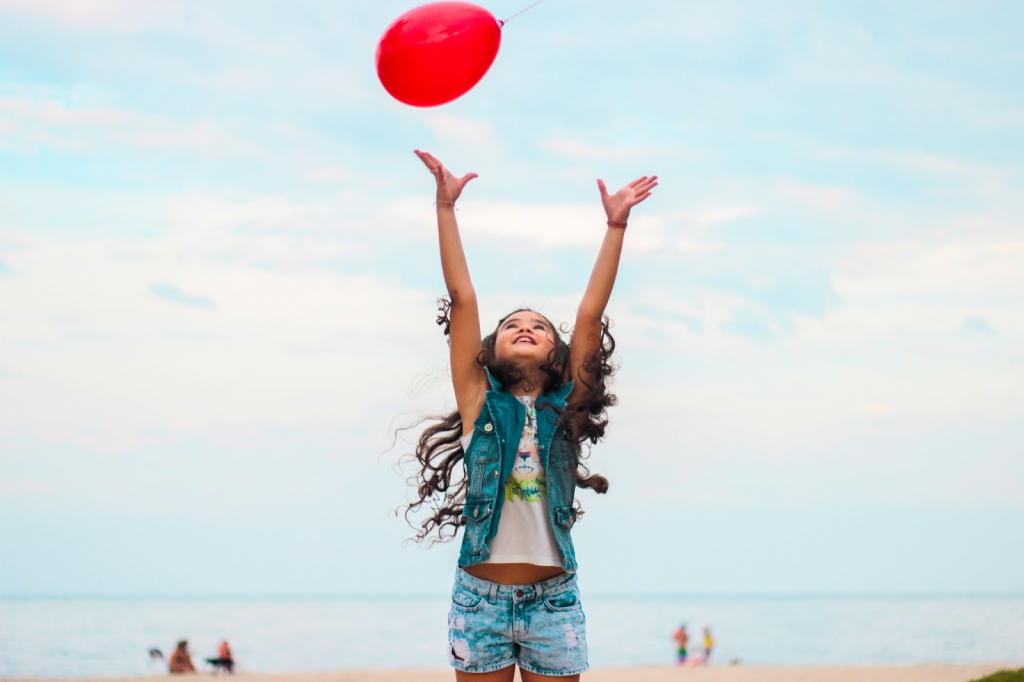
1. Indoor Bowling
What You’ll Need: Some open space, empty water bottles and a ball
How To Do: Set up a bowling alley in your home or classroom and set up some toys or empty water bottles as the pin. Use a soft ball to knock them down.
2. Heads Up
What You’ll Need: Sticky notes, markers
How To Do: Write random words on sticky notes and stick them on a kid’s forehead. The player opposite has to make the kid understand what the word is without actually saying the word.
3. Board Games
What You’ll Need: Board games like ludo, snakes and ladders, Life, etc
How To Do: Play some fun board games like Ludo, Snakes and Ladders, Monopoly, etc, depending on what the kids enjoy the most. This makes for really fun and exciting brain breaks for kids.
4. Minute To Win It
What You’ll Need: Household items like utensils, books, etc
How To Do: This is based on a popular TV show but only on a smaller level. Use your household items or anything you can find around to create a challenge for the kids and give them a minute to solve it.
5. Freeze Dance
What You’ll Need: An open area
How To Do: This is a fun music game for kids where you play some music and let them dance. When the music stops, everyone must freeze in place. The last one moving is out. You can use ABC songs for kids to promote learning at the same time.
6. Red Light Green Light
What You’ll Need: An open area
How To Do: This is one of the most fun brain breaks. In this game, one player is “it” and stands at one end of the play area. The other kids will stand behind a starting line that is on the other end of the area. When “it” says “red light,” players must stop. If “it” catches anyone moving, they’re out.
7. Pictionary
What You’ll Need: A board, and some markers
How To Do: Pictionary is a fun activity to play during one of their brain breaks. If you don’t have the kit, you can bring out the board and give one kid a random object or animal to draw without saying a word. The rest of the kids have to guess what it is.
8. Name That Tune
What You’ll Need: Speakers, instrumental music
How To Do: Play instrumental music of some popular songs that the kids might know. You can also do this with the poems they know. The kids have to guess each song or poem.
9. Animal Sounds
What You’ll Need: Nothing!
How To Do: This is one of the most fun brain breaks for students. Create teams and ask each team to choose one player who will make animal noises as the rest of the players guess the name of the animal.
10. Duck Duck Goose
What You’ll Need: An open area
How To Do: This indoor game for kids make them sit in a circle and declare one of them “it”. This goes around the circle touching each players’ head and saying “duck” to each. If they say “goose” to anyone, the kid has to get up and chase the “It”. If they’re able to catch them, they get to sit back, if not they become the new “It”.
Related Reading: Amazing Short Stories for Kids That Teach Beautiful Lessons
10 Best Brain Breaks for the Online Classroom

When you’re in an online classroom setting, it limits you in a lot of ways. And when it comes to brain breaks, you might not be able to play a lot of physical games, but hey, we’re here with a list of games and activities you can let your kids play!
1. Statue!
What You’ll Need: Some fun poses in your head
How To Do: In this activity, you will ask the kids to hold a pose you describe. The pose has to challenge so that the kids get a good laugh! For example, stand on your right foot and raise your right one in the air. The kids will have to hold the pose till you say “Let Go” or clap three times.
2. Hip-Hop
What You’ll Need: Nothing!
How To Do: For this game, ask the kids to hop alternatively on their feet. The number of hops will keep on increasing at each turn. For example, they hop on one foot once, then hop on the other twice, then hop thrice on the first one again and so on. The game continues till they either lose their balance or get tired. Whoever gets the most number of hops, wins.
3. Walk This Way
What You’ll Need: A table or any piece of furniture
How To Do: Ask the kids to walk a certain way around their table like hop, skip, jump, take baby steps, tiptoe, etc.
4. Dinosaurs and Kittens
What You’ll Need: Nothing!
How To Do: When given the prompt, half the kids have to pretend to be dinosaurs and the other half has to pretend to be kittens. When asked to change, they will exchange the characters.
5. My Day So Far
What You’ll Need: Nothing
How To Do: If you’re looking for some great brain breaks for the classroom, this is for you. Ask the kids to act out how their day has been so far. Give each kid only 30 seconds so they could navigate around the activity creatively.
6. Quick Draw
What You’ll Need: Paper, colors, pencil, etc.
How To Do: Give the kids 30 seconds to draw an object you name. Keep the object simple- like a flower, a cake or a tree.
7. Trivia
What You’ll Need: Trivia questions
How To Do: Randomly ask the kids some fun trivia questions like “What is the capital of the US?”, “Who is the president of the US?” or “Which is the largest forest in the world?” and give them 30 seconds to answer.
8. Mindful Breathing
What You’ll Need: Nothing!
How To Do: Guide the kids to do mindful breathing to help them relax by asking them to inhale deeply and count to 5 and then exhale deeply and count to 5 again.
9. Marching Band
What You’ll Need: Each kid will have to have some free space
How To Do: Ask the kids to march in their place as you call out a musical instrument every few seconds. The kids have to pretend to play the musical instrument announced while also giving the sound effects.
10. Jack Spin Jack
What You’ll Need: Some free space
How To Do: Each kid, when given the prompt has to do 5 jumping jacks, spin 3 times and then do 5 jumping jacks again, and so on.
Related Reading: Best Classroom Games to Help Teachers Elevate Their Efforts
5 Benefits of Brain Breaks for Kids
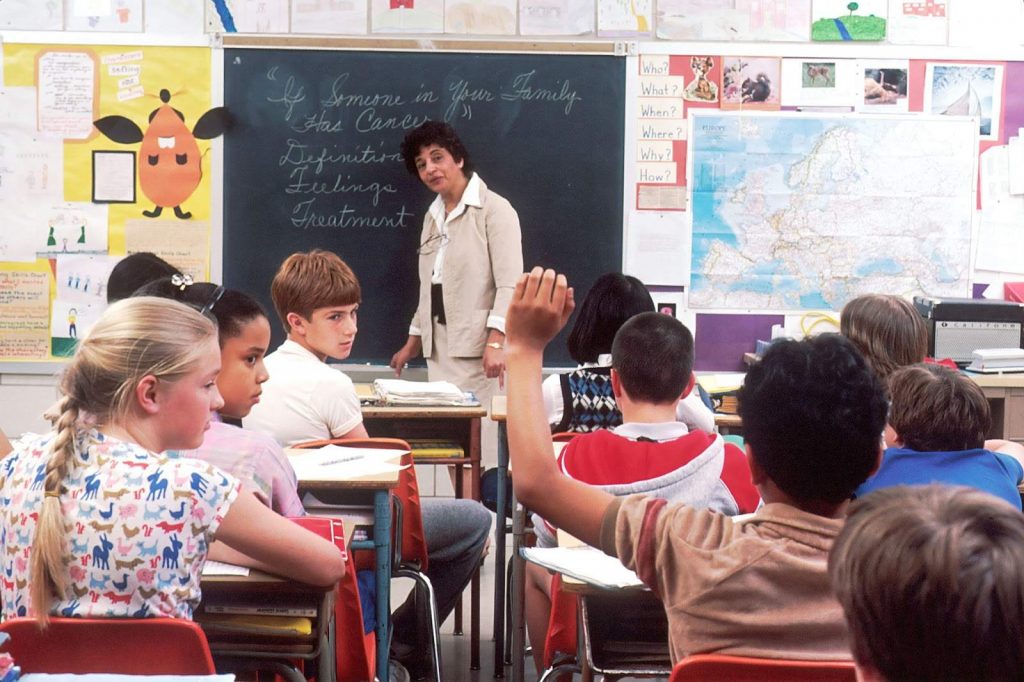
Brain breaks have proven to help kids learn better and focus on a task for longer durations. According to research at Edutopia.org, brain breaks can boost creativity, cognitive function and social skills. Here are other benefits of brain breaks for kids you should know about:
- Helps to sharpen short-term memory
- Minimizes anxiety and stress
- Increases motivation to learn and engagement levels
- Helps the kids to focus and clear their heads
- Helps to make the performance better
5 Tips to Use Brain Breaks Effectively
Brain breaks are undoubtedly beneficial for kids, but there are ways to make sure they’re effectively working. To help you out, we’ve listed 5 tips to use brain breaks effectively:
- Timing is key
According to a study published on Science Direct, the focus on a task starts to go down after 10 to 30 minutes. For kids, this means, they will need a brain break after every 20 minutes approximately, although the number may differ from one child to another and may need a little adjusting.
- Keep your options handy
Brain break activities can be quite difficult to remember and when the time comes, you might get confused about which activity to go for. To make things easier, make sure you’re keeping a list of all your favorite brain break activities for kids handy. Print them and pin them on the notice board or keep a list in your bag.
- There’s a right brain break activity for each kid
Each kid has a different personality and a different energy level. Make sure you’re choosing the right kind of brain activity for each kid so that they actually feel relaxed and ready to learn more instead of feeling more stressed out.
- Take feedback
Once you’re done with the class or the day, ask the kids how they liked the brain break activity. Let them give you honest feedback about what they liked and didn’t like and what they would like to change in the activity.
- Keep track of time
Make sure that you’re keeping a timer to ensure that the brain break activity isn’t too long or short. The timer should also be kept in front of kids so that they’re prepared to get back to work.
Conclusion
Brain breaks not only help kids relax and enjoy, but they also boost their curiosity and artistic side. Use these brain break activities for your kids and see them become smarter. Remember to give them enough room to create and learn new things, as a healthy balance of everything is important for their wholesome development.
Frequently Asked Questions (FAQs)
Do kids need brain breaks in school?
Yes, brain breaks in schools have repeatedly been proven to boost productivity, creativity and motivation in kids and help them to learn better.
Do kids learn better with brain breaks?
Yes, it has been observed that kids who get breaks are more attentive and perform better cognitively than the ones who don’t.
When should brain breaks be used?
Brain breaks aren’t for just when kids are feeling low on energy and can’t concentrate. These activities can also be done when the energy is high and the kids have wiggles. At this time, they need to release the extra energy to fully focus on the lesson.
























